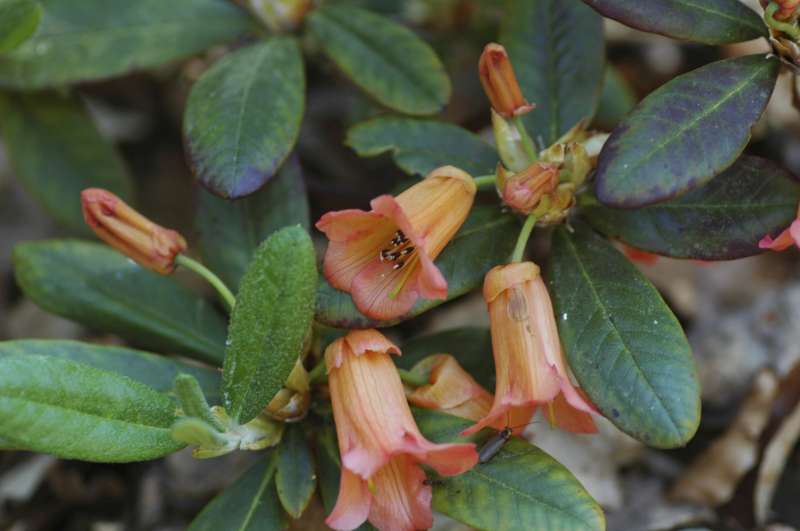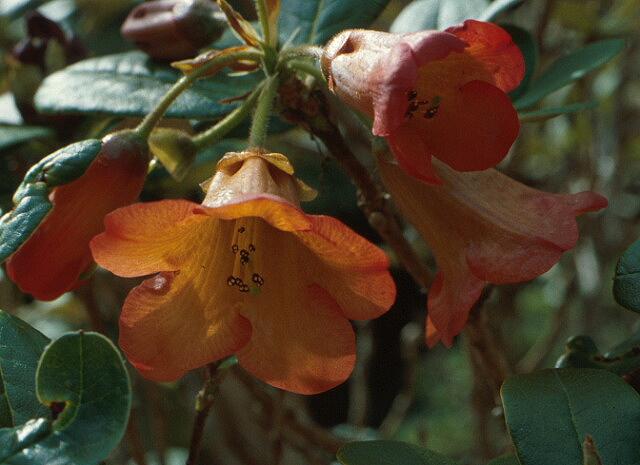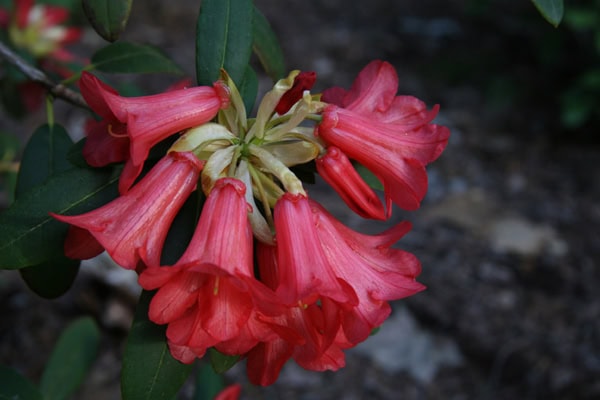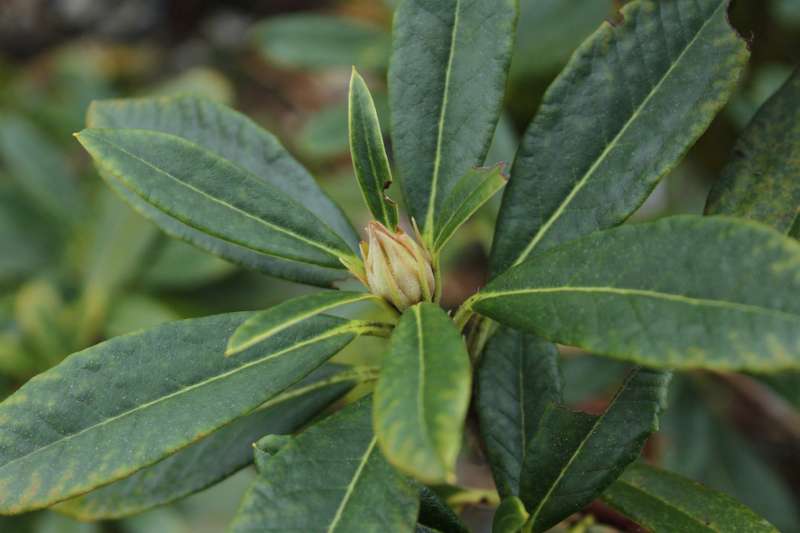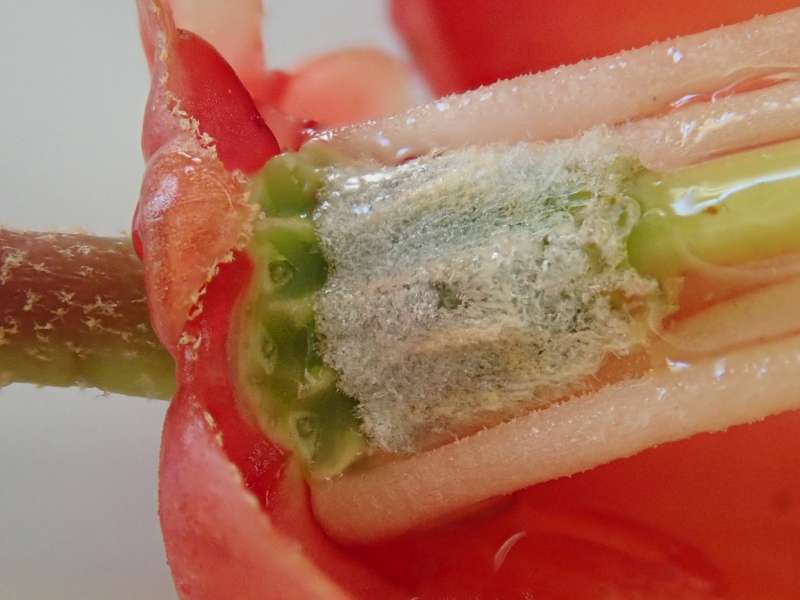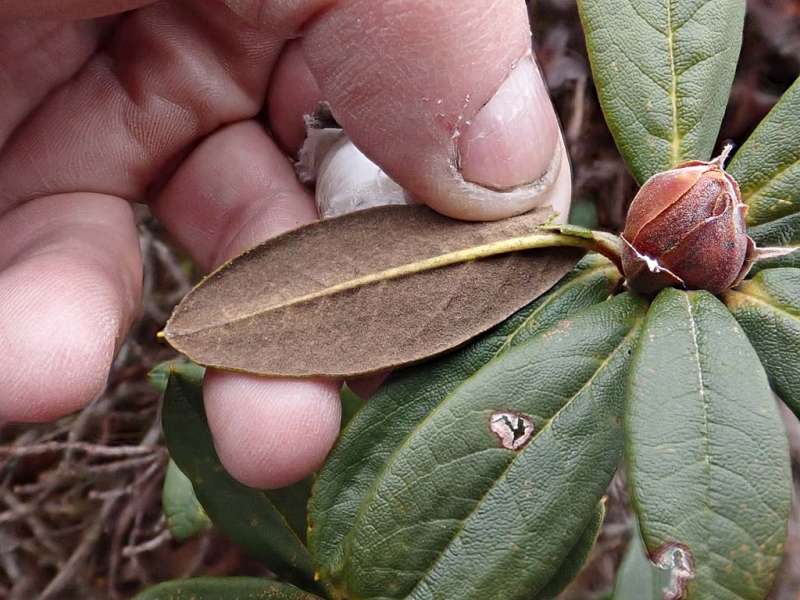Rhododendron dichroanthum ssp. dichroanthum
Billeder af Rhododendron dichroanthum ssp. dichroanthum
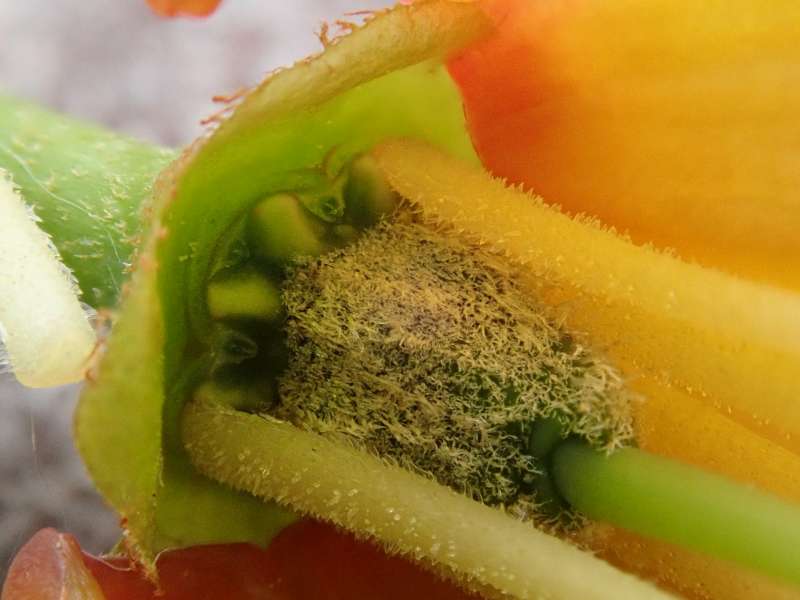
Beskrivelse
R. dichroanthum ssp. dichroanthum (Neriiflora). Kompakt voksende stedsegrøn busk. De kødfulde snævert klokke-formet blomster (sidst på foråret til begyndelsen af sommeren) er dyb orange, orange, gulligrosa, rød eller karmine, ofte med et stort kopformet blomsterbæger. Bladene har et lys sølvskinnende tæt indument på undersiden. En interessant sent blomstrende art med usædvanligt farvede blomster. Ofte anvendes den til hybridisering for sin usædvanlige blomster farve og sene blomstring. Relativt sol og varmetolerant. Vokser i V-Yunnan, hvor den er endemisk på Cang Shan, hvor den forekommer i kløfter og åbne enge fra 2800 til 3.800 m.
Hans Eiberg
● R. dichroanthum frø. Foto: Kurt Hansen
Key from Flora of China
1 Young shoots usually glandular-setose; ovary glandular-hairy. ———(2)
+ Young shoots setose, or setae absent; ovary without glandular hairs or with a few at base.
(3) 2 (1) Leaf blade 5.5–8 × 1.6–3 cm.——- 434d subsp. septentrionale
+ Leaf blade 6–9.5 × 2.5–4 cm.——— 434c subsp. scyphocalyx
3 (1) Leaf blade 4–7 × 2.5–3.5 cm, abaxial indumentum silvery to fawn.———434b subsp. apodectum
+ Leaf blade 4–10 × 1.6–4 cm.—————-(4)
4 (3) Leaf blade 4–10 × 3–4 cm, abaxial indumentum silvery, appressed.———-434a subsp. dichroanthum
+ Leaf blade 5.5–8 × 1.6–3 cm, abaxial indumentum whitish to fawn.———-434d subsp. septentrionale
ARS
Flora of China
RBGE Herbarium; R. dichroanthum
R. dichroanthum ssp. apodectum. Har de korteste blade. L:B 2-2.4 : 1
R. dichroanthum ssp. septentrionale. Har de længste blade. L:B >3 : 1
R. dichroanthum ssp. scyphocalyx. Har omvendt ægformede blade og kopformet calyx.
● R. dichroanthum ssp. scyphocalyx hos PS. Foto: P. Stangerup

